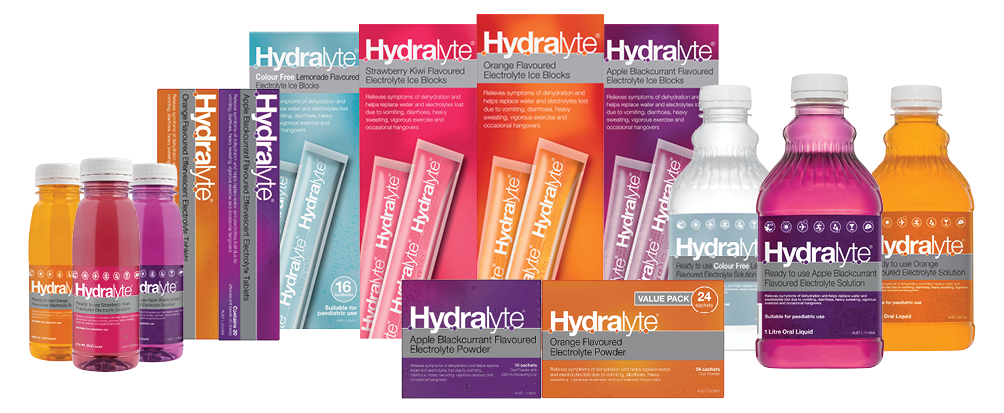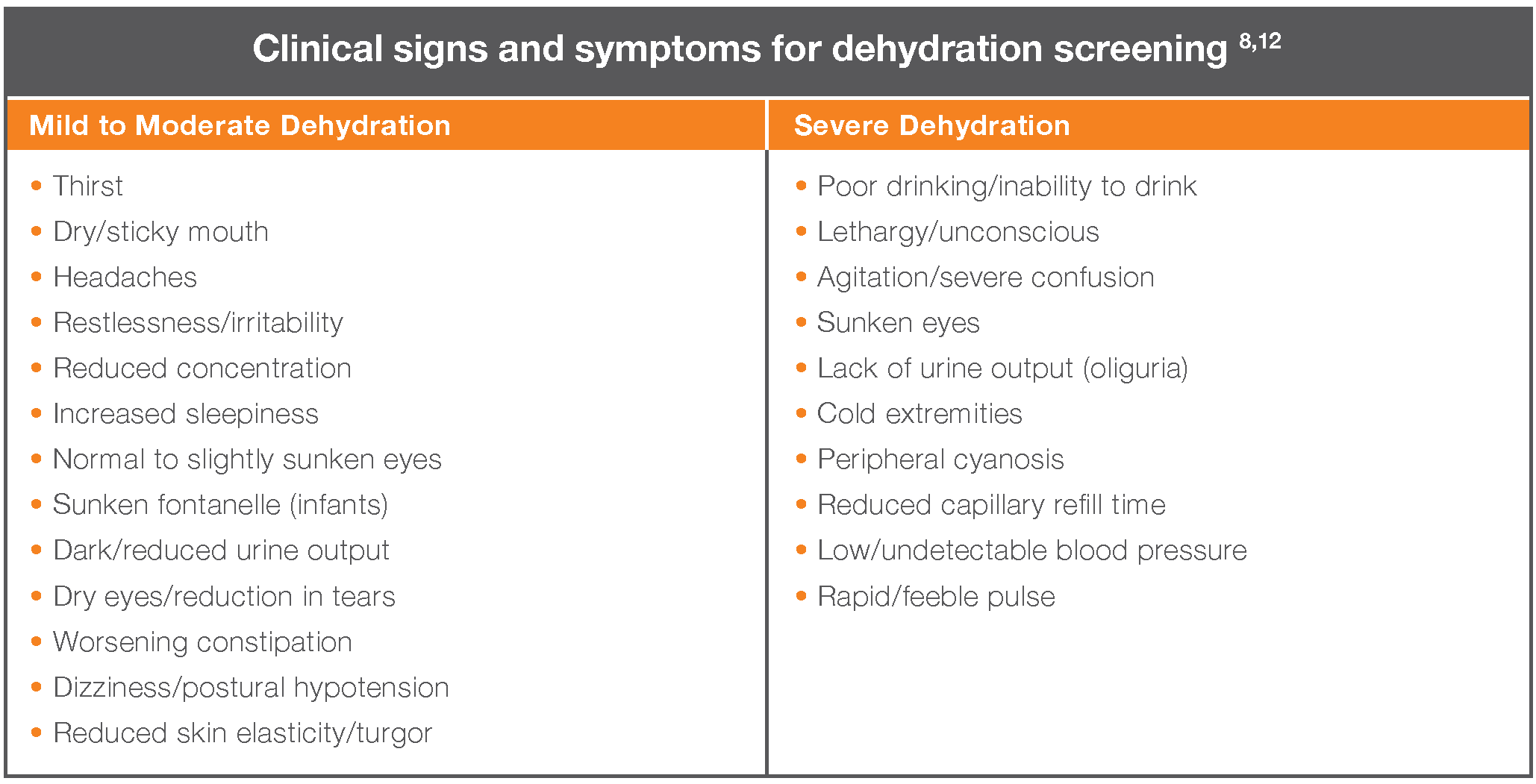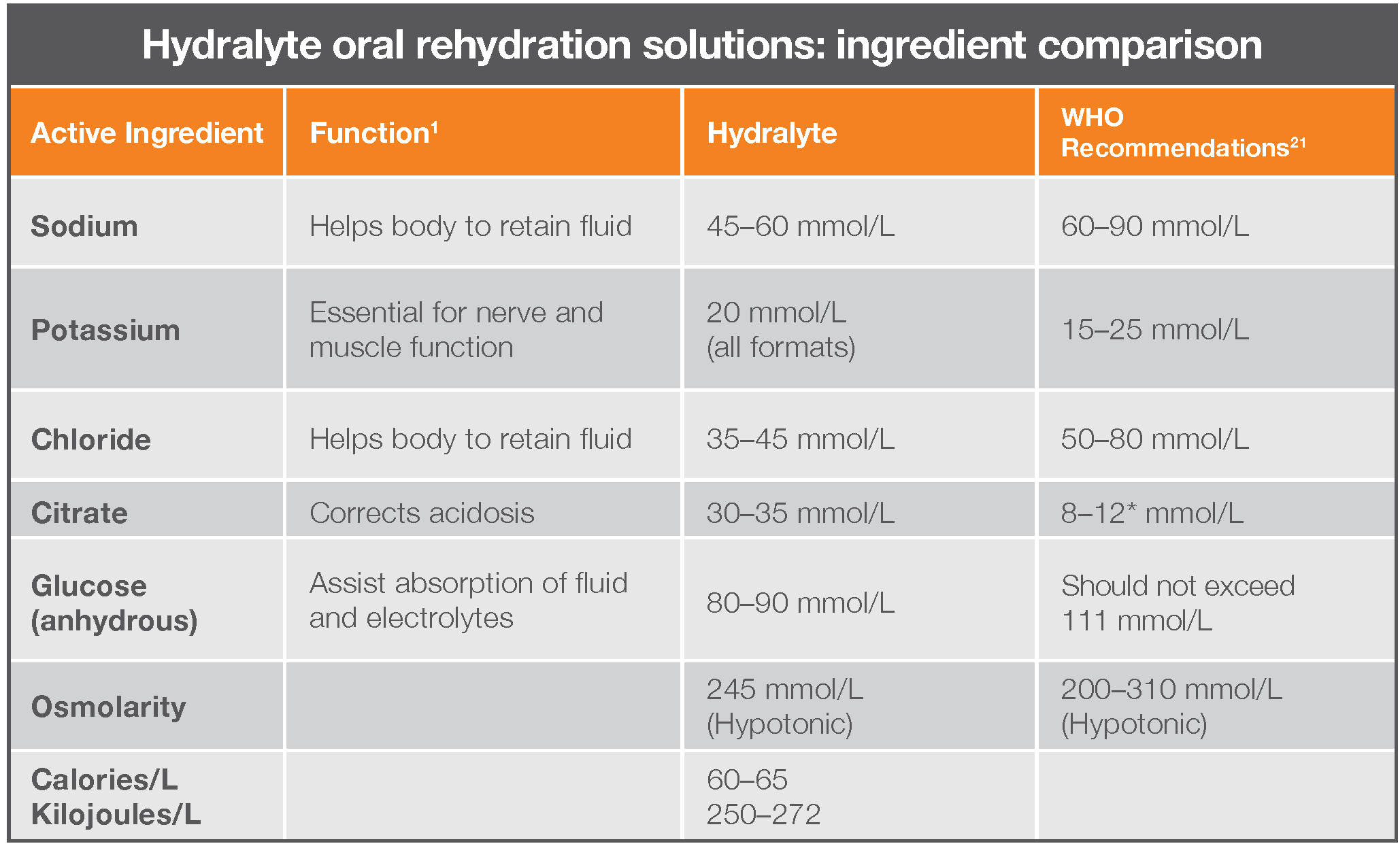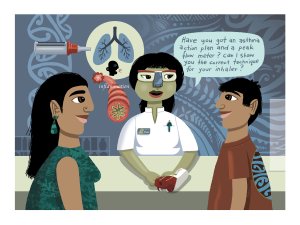Academic pharmacist Nataly Martini discusses the medical management of asthma in adults and adolescents, which has evolved to prioritise early anti-inflammatory treatment. She also explains how to improve patient outcomes by proactively identifying poor asthma control and supporting equitable access to education and treatment
Recognising and managing dehydration with Hydralyte
Recognising and managing dehydration with Hydralyte

Choosing the appropriate oral rehydration solution (ORS) is an important first step in managing mild to moderate dehydration.1-3 Hydralyte — formulated to meet World Health Organization (WHO) ORS recommendations — has the correct balance of fluid, glucose and electrolytes to allow rapid rehydration while helping restore electrolyte balance.1,4
Healthcare professionals play a crucial role in recognising and treating dehydration
— and identifying patients most at risk of dehydration and educating them on signs to look out for, self-management and when to seek help.6
Early detection is important as dehydration can progress rapidly
— if dehydration is not addressed symptoms can quickly worsen.3,7-9
Simple clinical signs and symptoms are useful in aiding initial diagnosis and prompting further action10 — particularly when assessing mild dehydration, advising patients on what to look out for or prompting the use of an ORS such as Hydralyte.11
However, many of the ‘typical’ indicators are subjective, may vary with age or are associated with other diseases and medications3,10 — a combination of physiological signs and biochemical markers along with patient history are needed to more accurately diagnose severity.2,9,10
Some people and some ‘everyday’ occasions have a higher dehydration risk than others, including:
- Common illness such as gastroenteritis, colds or influenza12-15
- Vomiting, diarrhoea, fevers and increased sweating can lead to water and electrolyte loss.
- When appetite is reduced fluids are also less likely to be replaced. - Work or sports related exercise
- Sustained or vigorous exercise (particularly under warm or hot conditions) can lead to excessive sweating and substantial water and electrolyte losses — potentially leading to increased skeletal muscle cramps and impaired performance.13
- Women and older adults can have a greater risk of hyponatraemia during and after vigorous exercise.11,13 - Travellers and holiday makers
- Air travel, unaccustomed heat or extreme physical activities, excessive alcohol drinking and gastrointestinal problems (such as traveller’s diarrhoea) can lead to dehydration.14,16-18 - Life stages
- Infants, children, pregnant and breastfeeding women, and older adults are particularly vulnerable to dehydration.3,14,19
Dehydration involves more than just the net loss of body water — it alters the volume, composition, and distribution of water within the body.7,14
An ORS — such as Hydralyte — helps supply maintenance requirements by correcting volume and electrolyte deficits, and replaces any ongoing abnormal losses.1
Hydralyte is specifically formulated to meet WHO ORS criteria for effective hydration.
ORS need to have an optimal balance of sodium and glucose — glucose to facilitate the absorption of sodium (and water) in the small intestine, and sodium and potassium to replace losses during dehydration.1
Using an ORS – such as Hydralyte – is a simple, proven intervention that helps rehydrate patients with mild or moderate dehydration symptoms faster than water alone.1,20
Not all ORS are the same and ORS are not the same as sports or energy drinks.
The Hydralyte range is formulated for effective hydration:
- With the correct balance of sodium and glucose in-line with WHO ORS recommendations
 Sodium, glucose and water (by osmosis) rapidly move into the cell before being actively transported out into the bloodstream.
Sodium, glucose and water (by osmosis) rapidly move into the cell before being actively transported out into the bloodstream.
- Are hypotonic — allowing effective rehydration while minimising potential side effects such as a feeling of fullness/bloating
- Have a lower sodium content — formulated specifically for the diets of developed countries
- Contain low sugar
- Are suitable for all age populations (0–Adult)
- Available in a variety of formats and flavours
GENERAL SALE MEDICINE. ALWAYS READ THE LABEL FOR INFORMATION ON DOSES, APPROPRIATE PRECAUTIONS, CONTRAINDICATIONS AND INTERACTIONS, AND ONLY RECOMMEND AS DIRECTED.
- World Health Organization (WHO). Oral rehydration salts. Production of the new ORS. 2006. Available at: https://www.who.int/maternal_child_adolescent/documents/fch_cah_06_1/ en/ (accessed May 2020).
- Harris C, et al. Aust Fam Physician. 2008;37(6 Spec No):22-9.
- Woodward, M. Guidelines to effective hydration in aged care facilities. Aged & Residential Care Services, Heidelberg Repatriation Hospital. April 2013. Available at: https://www.semanticscholar.org (accessed May 2020).
- TGA Public summary. Hydralyte Orange Flavoured Electrolyte Powder. Available at: https://www.ebs.tga.gov.au/servlet/xmlmillr6?dbid=ebs%2FPublicHTML%2FpdfStore.nsf&docid=F229C741C69FCC78CA25832B003CB904&agid=(PrintDetailsPublic)&actionid=1 (accessed June 2020).
- Cheuvront SN, et al. Am J Clin Nutr. 2013;97(3):455-62.
- Sankoff J. Aust Fam Physician. 2015;44(1-2):22-6.
- Thomas DR, et al. J Am Med Dir Assoc. 2008;9(5):292- 301.
- Campbell, N. Nursing Times. 2014;110:20-1.
- Fortes MB, et al. J Am Med Dir Assoc. 2015;16(3):221-8.
- Bak A, et al. Curr Res Nutr Food Sci. 2017;5:43-54.
- Vivanti A, et al. Arch Gerontol Geriatr. 2008;47(3):340-55.
- World Health Organization (WHO). The treatment of diarrhoea: a manual for physicians and other senior health workers (4th rev). 2005. Available at: https://www.who.int/maternal_child_adolescent/documents/9241593180/en/ (accessed May 2020).
- American College of Sports Medicine, et al. Med Sci Sports Exerc. 2007;39(2):377-90.
- EFSA Panel on Dietetic Products, Nutrition, and Allergies (NDA) EFSA Journal 2010; 8(3):1459. Available at: www.efsa.europa.eu (accessed May 2020).
- El-Sharkawy AM, et al. Nutr Rev. 2015;73 Suppl 2:97-109.
- Huyghe T, et al. Sports (Basel). 2018;6(3):89.
- Leder K. Aust Fam Physician. 2015;44(1-2):34-37.
- Shirreffs SM, Maughan RJ. J Appl Physiol 1997;83(4):1152- 8.
- Patil CL, et al. Ecol Food Nutr. 2012;51(5):394-417.
- Wright EM, et al. Physiol Rev. 2011;91(2):733-94.
- World Health Organization (WHO). Implementing the new recommendations on the clinical management of diarrhoea: guidelines for policy makers and programme managers. 2006. Available at: https://www.who.int/maternal_child_adolescent/documents/9241594217/ en/ (accessed July 2020).







